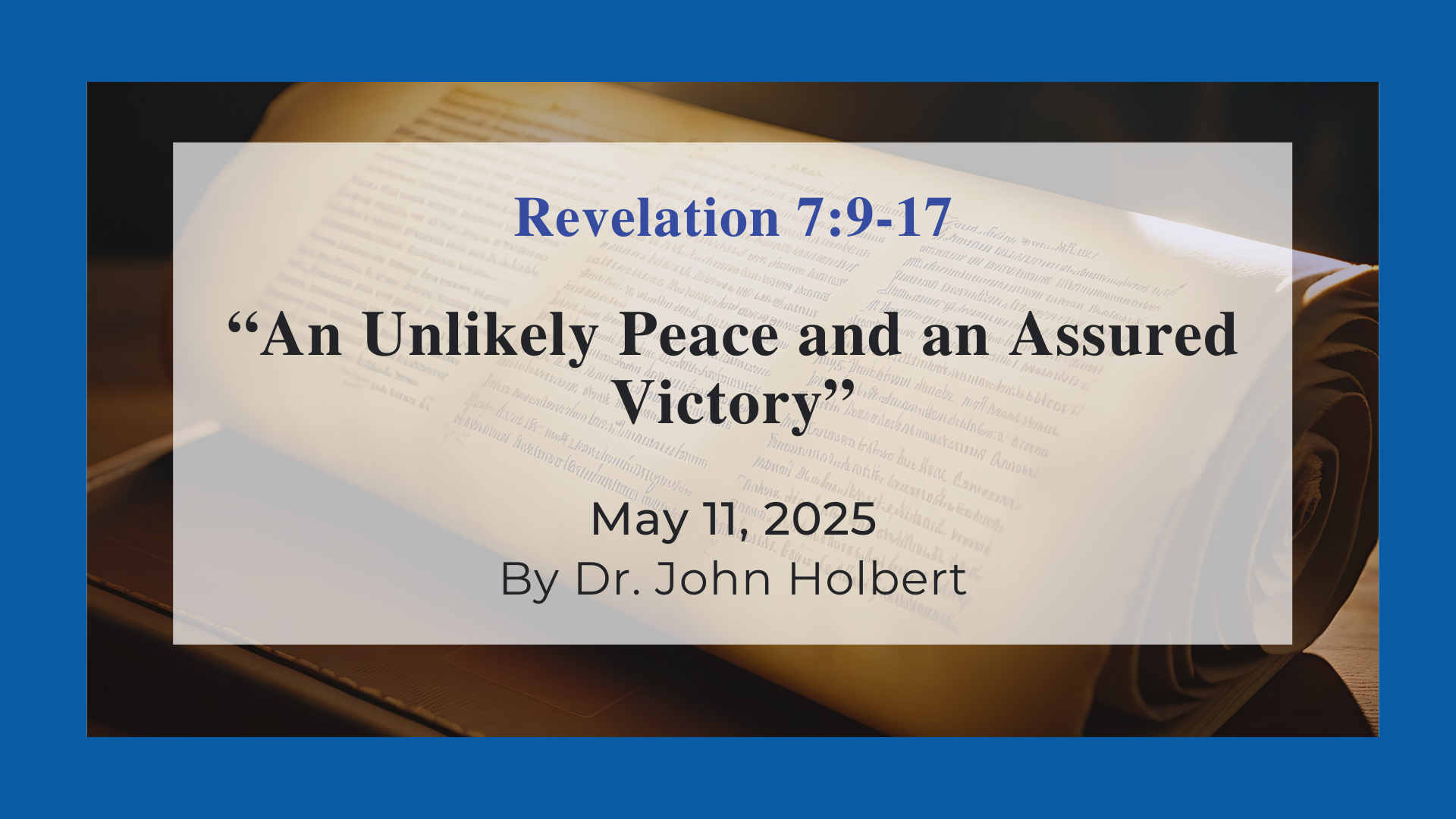An Unlikely Peace and an Assured Victory - Reflections on Revelation 7:9-17, Easter 4, Year C
by John C. Holbert on Thursday, March 27, 2025

At nearly every stage of the narrative of Revelation, I can hear in my mind the absurd ideas that have been derived from its rich imagery, ideas that have made fortunes for those who abuse John’s work for their own sordid ends. Rev.7 provides much fodder for these abusive would-be shepherds, who have turned John’s language into foolish speculations about peoples and nations that John had no earthly or heavenly notions about. The chapter begins with a rather prosaic list of the “one hundred and forty-four thousand from the tribes of Israel” who have been marked, says John, “by the seal of our God on (their) foreheads” (Rev.7:4). These are the ones who will survive the coming “tribulation,” gaining the crown of life by following the way of the slain lamb. John then lists nearly all of the ancient tribes of Israel, but omitting the tribe of Dan, while including both Joseph and Manasseh. Just why the list of the twelve tribes does exactly this we cannot know.
What is important is that there are exactly twelve tribes, suggesting early Christianity’s conviction that the Church was the continuation of old Israel (see Rom.9-11; Gal.6:16; Eph 2:11-22; I Peter 2:9). The 144,000 is a vast multitude, beyond counting, despite various modern denominations that claim their number is referred to prophetically by John (see The Seventh-Day Adventists, among others). The number is, of course, symbolic: 144,000 is a square of 12,000, thus suggesting the twelve tribes of Israel and the twelve apostles of the New Israel (Rev.21:12-14). This vast throng are those who now find themselves at the throne of God, having passed through the tribulation that has been held back by the “four angels” until the 144,000 have been sealed by God against the onslaughts of that tribulation. As is found in Ezekiel 9:4-6, where we see another protective mark of God on the foreheads of God’s chosen, so here in Revelation we observe the sealing of God’s servants. But note carefully: this sealing is not a symbol of protection from tribulation and death but rather a means of being sustained in and through the tribulation that is coming. For John, all will suffer the coming tribulation, and those following the way of the slain lamb will find their way to God’s throne.
Now in Rev.7:9-17 we see the victors, robed in white, having passed through the “great tribulation.” This echoes Dan.12:1: “And there shall be a time of trouble, such as never has been since there was a nation till that time,” and also Mt.13:9: “For in those days there shall be such a tribulation as has not been from the beginning of creation which God created until now.” For John the tribulation through which these martyrs come triumphantly is imminent persecution (see Rev.3:10; 13:7-10). And note the delicious paradox of their victory; their robes have been made white in the blood of the Lamb! Here precisely is the definition of victory according to John: because of God and the Lamb, the martyrs have triumphed by suffering death, not be inflicting hurt or harm.
Exactly at this point we can see clearly how false and dangerous are the readings of Revelation that suggest that those who “follow Jesus” will be raptured to heaven while all others will be swept away into Hell. And when that occurs, those in heaven will observe with pleasure those writhing below them for eternity, punished by a vengeful God. This is evil so to construe John’s work! In reality, the vast number of the witnesses—an infinite, uncountable number—will sing the song of victory to God and the Lamb and will have passed through the imminent tribulation to victory due to, and only due to, the fact that the lamb has first conquered by his death on the cross.
Rather than imagining that some imminent eschatological tribulation is at hand, as John was convinced of in his own time, we moderns may be failing to discern a reality that is a far more insidious challenge for us. John looked at the Roman Empire of his time, and saw a power based on what was a distorted set of values: power based on riches and warfare, the Pax Romana in its most terrible form. That Roman reality was ever ready to release its values on the world. Have we moderns become so much a part of our own contemporary culture, the veritable lifestyle of the Western world, that we can no longer see what God has had in store for us, and for God’s world, from the foundation of creation, namely a world built on justice, care for others, and genuine peace. John bids us follow the slain lamb, and not to be sucked into the vortex of luxurious and empty life for ourselves, refusing to see the dangers of such individual living for the vast numbers of God’s people, consigning millions to lives of poverty and depravation.
Ironically, those who read John’s Revelation as some sort of predictive book, outlining the movements of the world’s history, demonstrating that the USA is fated to lead the world over against the hordes of enemies that would destroy it, but eventually triumphing after a heavenly rapture snatches the chosen to God’s heaven, leaving all others to a monstrous fate in Hell, have in fact reversed John’s central concern. God’s way is the way of peace, not war, not the separation of peoples, but their unity in the way of the slain Lamb. The New Heaven and New Earth will be the very symbol of that desire of God for the saving of all people, not merely a few, as we will see as we continue our journey through this fabulous book.
